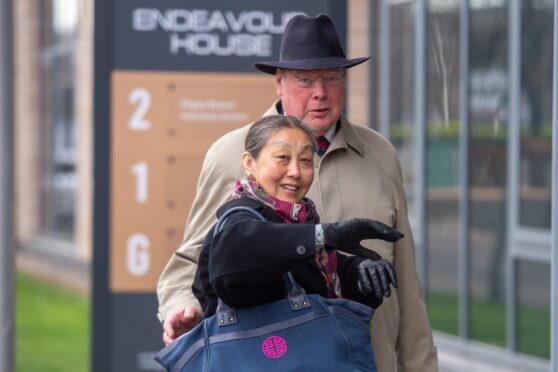Demands for more teachers, smaller class sizes and less stress and overworking are being made by Fife teachers.
And further calls to better tackle violent and disruptive pupil behaviour with more support staff and ring-fenced funding are also being made.
Members of the Fife branch of the EIS teaching union are making the demands through a local manifesto, which they expect to be addressed in the new parliamentary sitting, following this week’s elections.
The manifesto says violent and disruptive pupil behaviour has increased since the pandemic and nearly a quarter of Fife teachers have suffered abuse or violence in the classroom over the previous 12 months.
Pauline Stewart, Fife EIS president, said: “Fife Council has a duty to protect the health and safety of their employees.
“Staff have a right to go to work and not face physical and verbal abuse, and pupils have a right to learn in conditions which are safe.
“We want to work with Fife Council to create an improved strategy to make our schools safe.”
‘Stress and overwork’
The manifesto also says that 70% of members in Fife regularly complain of stress and overwork, and that most teachers surveyed would no longer recommend a career in teaching.
It states: “Many teachers have already left during the pandemic and there is concern that many teachers may be planning on leaving the profession in the near future.”
Graeme Keir, EIS spokesman for Fife, said: “No-one wants their child taught by someone who is chronically stressed or at risk of burnout.
“You don’t want your child’s teacher to have been burning the candle to complete paperwork. Workload and stress need to be treated seriously so that teachers and pupils get a good deal in the classroom.”
The manifesto also asks for a reduction in planning bureaucracy, improved career pathways for teachers to increase retention of staff and the expertise available to new teachers and pupils.
And it calls for increased funding for learning support, stating that many young people have struggled to catch up after lockdowns and periods of self-isolation and that school budgets do not stretch far enough to support them with additional help.
The local demands complement a wider manifesto for improvement in education set out by the EIS in March.
Graeme said: “The pandemic has exposed how little resilience is left in many schools after 10 years of cuts.
“The last two years of Covid disruption has been traumatic for staff and pupils, and while it’s not over, we need to start investing in education staff and their pupils if we are to undo some of the damage caused by the pandemic.
“There’s much that can be done at a local level to improve schools and we’re calling on all prospective councillors to commit to our suggestions for improvement.”
‘Scrap the super-head management plan’
The local manifesto also calls for the East Neuk ‘super-head’ management plan to be scrapped.
It says: “A single head teacher cannot adequately support a secondary school and a number of primary schools.
“Such proposals would lead to a reduced service for pupils and parents. Fife EIS is keen to work with Fife Council to find alternative solutions in areas where there are staffing difficulties.”
Fife Council says…
Responding to the EIS claims about violence in schools, Fife head of education and children’s services Shelagh McLean said the safety of staff and pupils was paramount.
She said: “Schools record any violent incidents so that appropriate support and guidance can be provided.
“We have professional learning programmes, based on relationships and learning, which are developed around our nurture, de-escalation and restorative practices.
“Violent incidents are normally isolated, and we tailor support to suit the specific situation, working with our trade union colleagues to make sure staff are supported in the best possible way.”














Conversation